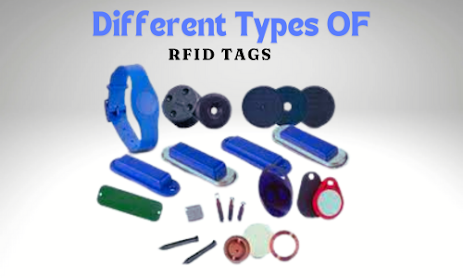RFID Labels for Asset Tracking: Keeping Tabs on Your Valuable Equipment
In the modern business world, staying on top of your assets is vital for operational success. RFID (Radio Frequency Identification) technology has transformed asset tracking, offering advanced monitoring methods, and managing valuable equipment. RFID labels, including UHF (Ultra-High Frequency) RFID labels, provide effective solutions for a wide range of industries. By utilizing RFID labels, businesses can gain real-time insights, improve tracking accuracy, and boost security. Let’s explore how different industries are benefiting from RFID labels and how this technology can keep your assets in check efficiently.
RFID
labels are a combination of an RFID chip and an antenna embedded in a paper or
plastic label. These labels can be attached to objects, enabling the wireless
transfer of data to RFID readers. This technology allows for the
identification, tracking, and management of assets without the need for direct
line-of-sight, unlike traditional barcodes.
How RFID Labels Work for Asset Tracking
RFID labels
operate by emitting radio waves, which are picked up by RFID readers. Each
label contains a unique identifier, allowing the system to distinguish between
different assets. The data collected can be used to monitor the location,
movement, and status of the tagged equipment in real time.
UHF RFID Labels: Enhanced Capabilities
UHF
(Ultra-High Frequency) RFID labels operate in the 300 MHz to 3 GHz range,
offering several advantages over other types of RFID labels, particularly for
asset tracking:
- Longer Read Range: UHF RFID labels can be
read from greater distances, often up to 30 feet or more. This makes them
ideal for tracking assets in large areas, such as warehouses, construction
sites, and manufacturing plants.
- Faster Data Transfer: UHF RFID systems can read
multiple tags simultaneously at a faster rate, which is crucial for
environments where numerous assets need to be tracked quickly and
efficiently.
- Cost-Effective Scalability: Due to their longer read
range and faster data processing capabilities, UHF RFID systems are
cost-effective for large-scale deployments, reducing the need for numerous
readers.
Applications of RFID and UHF RFID Labels Across
Industries
- Manufacturing
- Example: A large manufacturing
plant uses UHF
RFID labels to track the location and status of machinery parts and
tools. Each piece of equipment is tagged with a UHF RFID label, which
communicates with readers placed throughout the facility. This system
ensures that tools are always available when needed, reduces downtime,
and prevents loss.
- Benefits: Improved inventory
management, reduced equipment loss, and enhanced operational efficiency.
- Healthcare
- Example: Hospitals and clinics use
RFID labels to track medical equipment, such as wheelchairs,
defibrillators, and surgical instruments. By tagging each piece of
equipment, healthcare providers can quickly locate essential items,
ensuring they are available during emergencies.
- Benefits: Increased patient safety,
efficient equipment utilization, and compliance with regulatory
standards.
- Retail
- Example: Retailers use
RFID labels to manage their stock of high-value items, such as
electronics and jewelry. Each item is tagged with an RFID label, allowing
the store to monitor its location and movement within the premises. This
reduces theft and ensures accurate inventory levels.
- Benefits: Enhanced security, better
inventory accuracy, and improved customer service.
- Construction
- Example: Construction companies
tag heavy machinery and tools with RFID labels to track their usage and
location on large job sites. This helps in monitoring equipment
maintenance schedules and prevents unauthorized use or theft.
- Benefits: Better asset management,
reduced equipment downtime, and enhanced site security.
- Logistics
- Example: Logistics companies use
RFID labels to track shipments and containers throughout the supply
chain. Each container is tagged, providing real-time location data that
helps in optimizing routes and ensuring timely deliveries.
- Benefits: Increased supply chain
visibility, reduced shipping errors, and improved delivery efficiency.
Benefits of Using RFID Labels for Asset Tracking
- Real-Time Visibility RFID labels provide
real-time data on the location and status of assets. This visibility
allows businesses to make informed decisions quickly, reducing downtime
and improving productivity.
- Enhanced Accuracy Unlike manual tracking
methods, RFID labels offer a high degree of accuracy in asset
identification and location tracking. This minimizes errors and ensures
that assets are properly accounted for.
- Cost Savings By reducing the loss and
misplacement of assets, RFID labels help businesses save money. They also
streamline inventory management, reducing the time and labor costs
associated with manual tracking.
- Improved Security RFID labels enhance
security by providing a tamper-proof way to track valuable equipment. This
reduces the risk of theft and unauthorized use, protecting a company’s
investment in its assets.
- Automated Data Collection RFID systems automate the
data collection process, reducing the need for manual input and the
associated errors. This leads to more reliable data and streamlined
operations.
Implementing RFID Labels in Your Business
To
successfully implement RFID labels for asset tracking, follow these steps:
- Identify Assets to be
Tracked
Determine which assets are critical to your operations and would benefit
from RFID tracking. Focus on high-value or frequently used equipment.
- Choose the Right RFID Labels Select RFID labels that are
suitable for your environment. Consider factors such as durability, read
range, and compatibility with your existing systems.
- Install RFID Readers Place RFID
readers in strategic locations to ensure comprehensive coverage and
accurate data capture.
- Integrate with Existing
Systems
Ensure that your RFID system integrates seamlessly with your current asset
management software to enable real-time data access and reporting.
- Train Staff Educate your employees on
how to use the RFID system effectively. Provide training on scanning
procedures and data interpretation.
Conclusion
RFID
labels, especially UHF RFID labels, offer a powerful solution for asset
tracking across various industries. By providing real-time visibility,
enhancing accuracy, and improving security, they help businesses manage their
valuable equipment more efficiently. Whether in manufacturing, healthcare,
retail, construction, or logistics, implementing RFID labels can lead to
significant operational benefits and cost savings. Embrace this technology to
keep tabs on your assets and streamline your operations for greater success.



Comments
Post a Comment